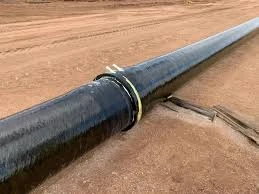
-
 Afrikaans
Afrikaans -
 Albanian
Albanian -
 Amharic
Amharic -
 Arabic
Arabic -
 Armenian
Armenian -
 Azerbaijani
Azerbaijani -
 Basque
Basque -
 Belarusian
Belarusian -
 Bengali
Bengali -
 Bosnian
Bosnian -
 Bulgarian
Bulgarian -
 Catalan
Catalan -
 Cebuano
Cebuano -
 China
China -
 China (Taiwan)
China (Taiwan) -
 Corsican
Corsican -
 Croatian
Croatian -
 Czech
Czech -
 Danish
Danish -
 Dutch
Dutch -
 English
English -
 Esperanto
Esperanto -
 Estonian
Estonian -
 Finnish
Finnish -
 French
French -
 Frisian
Frisian -
 Galician
Galician -
 Georgian
Georgian -
 German
German -
 Greek
Greek -
 Gujarati
Gujarati -
 Haitian Creole
Haitian Creole -
 hausa
hausa -
 hawaiian
hawaiian -
 Hebrew
Hebrew -
 Hindi
Hindi -
 Miao
Miao -
 Hungarian
Hungarian -
 Icelandic
Icelandic -
 igbo
igbo -
 Indonesian
Indonesian -
 irish
irish -
 Italian
Italian -
 Japanese
Japanese -
 Javanese
Javanese -
 Kannada
Kannada -
 kazakh
kazakh -
 Khmer
Khmer -
 Rwandese
Rwandese -
 Korean
Korean -
 Kurdish
Kurdish -
 Kyrgyz
Kyrgyz -
 Lao
Lao -
 Latin
Latin -
 Latvian
Latvian -
 Lithuanian
Lithuanian -
 Luxembourgish
Luxembourgish -
 Macedonian
Macedonian -
 Malgashi
Malgashi -
 Malay
Malay -
 Malayalam
Malayalam -
 Maltese
Maltese -
 Maori
Maori -
 Marathi
Marathi -
 Mongolian
Mongolian -
 Myanmar
Myanmar -
 Nepali
Nepali -
 Norwegian
Norwegian -
 Norwegian
Norwegian -
 Occitan
Occitan -
 Pashto
Pashto -
 Persian
Persian -
 Polish
Polish -
 Portuguese
Portuguese -
 Punjabi
Punjabi -
 Romanian
Romanian -
 Russian
Russian -
 Samoan
Samoan -
 Scottish Gaelic
Scottish Gaelic -
 Serbian
Serbian -
 Sesotho
Sesotho -
 Shona
Shona -
 Sindhi
Sindhi -
 Sinhala
Sinhala -
 Slovak
Slovak -
 Slovenian
Slovenian -
 Somali
Somali -
 Spanish
Spanish -
 Sundanese
Sundanese -
 Swahili
Swahili -
 Swedish
Swedish -
 Tagalog
Tagalog -
 Tajik
Tajik -
 Tamil
Tamil -
 Tatar
Tatar -
 Telugu
Telugu -
 Thai
Thai -
 Turkish
Turkish -
 Turkmen
Turkmen -
 Ukrainian
Ukrainian -
 Urdu
Urdu -
 Uighur
Uighur -
 Uzbek
Uzbek -
 Vietnamese
Vietnamese -
 Welsh
Welsh -
 Bantu
Bantu -
 Yiddish
Yiddish -
 Yoruba
Yoruba -
 Zulu
Zulu
Feb . 11, 2025 16:56
Back to list
fiberglass for steel smelting plant.
Fiberglass, a versatile and durable material, is increasingly finding its niche in the realm of steel smelting plants. Its application spans over various crucial areas, offering a unique set of advantages that enhance efficiency, safety, and sustainability within these industrial environments. This article delves into its multifaceted roles and the enduring benefits it brings, highlighting why fiberglass is essential for steel smelting operations.
Beyond its physical properties, fiberglass also contributes to enhanced environmental sustainability in steel smelting operations. Its insulation capabilities result in improved energy efficiency, aligning with the global industrial shift towards greener practices. Furthermore, fiberglass is composed of abundant raw materials, and innovations in its manufacturing process have made it increasingly recyclable. By incorporating fiberglass, smelting plants can reduce their carbon footprint and adhere to stricter environmental regulations. The safety aspect is another critical facet where fiberglass's benefits come to the fore. Unlike metals, fiberglass is non-flammable, which is a considerable advantage in high-temperature environments where sparks and heat can easily ignite fires. Its fire-retardant properties help in mitigating risks, protecting both the workforce and the infrastructure. Additionally, since fiberglass does not conduct electricity, it reduces the risk of electrical hazards, further ensuring the safety of personnel operating within these facilities. From an economic perspective, the initial costs associated with fiberglass might be higher than some conventional materials. However, the long-term cost efficiency it provides through durability, reduced maintenance, and energy savings outweighs the initial investment. Incorporating fiberglass into infrastructure intensifies its market value and operational appeal, making it a prudent investment for forward-thinking businesses in the steel industry. Overall, the use of fiberglass in steel smelting plants exemplifies a confluence of durability, safety, economic sense, and environmental responsibility. As this industry continues to confront challenges related to efficiency, sustainability, and safety, materials like fiberglass will be at the forefront of innovations that drive future transformation. Its versatile applications demonstrate an exemplary balance between modern industrial demands and ecological mindfulness, ensuring it remains indispensable to the infrastructure of steel smelting plants now and in the future.


Beyond its physical properties, fiberglass also contributes to enhanced environmental sustainability in steel smelting operations. Its insulation capabilities result in improved energy efficiency, aligning with the global industrial shift towards greener practices. Furthermore, fiberglass is composed of abundant raw materials, and innovations in its manufacturing process have made it increasingly recyclable. By incorporating fiberglass, smelting plants can reduce their carbon footprint and adhere to stricter environmental regulations. The safety aspect is another critical facet where fiberglass's benefits come to the fore. Unlike metals, fiberglass is non-flammable, which is a considerable advantage in high-temperature environments where sparks and heat can easily ignite fires. Its fire-retardant properties help in mitigating risks, protecting both the workforce and the infrastructure. Additionally, since fiberglass does not conduct electricity, it reduces the risk of electrical hazards, further ensuring the safety of personnel operating within these facilities. From an economic perspective, the initial costs associated with fiberglass might be higher than some conventional materials. However, the long-term cost efficiency it provides through durability, reduced maintenance, and energy savings outweighs the initial investment. Incorporating fiberglass into infrastructure intensifies its market value and operational appeal, making it a prudent investment for forward-thinking businesses in the steel industry. Overall, the use of fiberglass in steel smelting plants exemplifies a confluence of durability, safety, economic sense, and environmental responsibility. As this industry continues to confront challenges related to efficiency, sustainability, and safety, materials like fiberglass will be at the forefront of innovations that drive future transformation. Its versatile applications demonstrate an exemplary balance between modern industrial demands and ecological mindfulness, ensuring it remains indispensable to the infrastructure of steel smelting plants now and in the future.
Related Products









